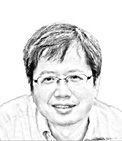Chinese zhusuan: Ancient art of calculating numbers
LONG before calculators and computers, ancient Chinese merchants and scholars solved problems with a handful of beads and a wooden frame. This was zhusuan, China’s traditional method of calculation using an abacus.
In Chinese, zhu means bead, which is an essential element of the abacus, while suan means to calculate. Widely recognized as China’s fifth great invention along with papermaking, printing, gunpowder and compass, zhusuan reflects the ingenuity of ancient Chinese civilization.
The significance of zhusuan was officially recognized in 2013 when the United Nations Educational, Scientific and Cultural Organization inscribed it on the Representative List of the Intangible Cultural Heritage of Humanity. The listing praised not only the technique, but also the knowledge system, oral formulas and mental discipline embedded in the practice.
The roots of zhusuan can be traced back more than 10,000 years to the Neolithic era when people used their fingers, stones and sticks to keep count.
Later, they used knotted ropes, an early form of record-keeping known as jiesheng jishu, where various knot sizes, colors and spacing conveyed different meanings.
As society advanced, the need for more sophisticated tools grew. During the Shang (16th century-11th century BC) and Zhou (11th century-256 BC) dynasties, people developed counting rods, which laid the groundwork for the abacus.
The first written reference to bead-based calculation appeared in AD 190, in “Supplementary Notes on the Art of Figures” by Xu Yue. Xu was a well-known mathematician and astronomer of the Eastern Han Dynasty (AD 25-220). Of the 14 counting methods mentioned in Xu’s book, zhusuan is the only one still in practice today.
In the Song Dynasty (960-1279) artist Zhang Zeduan’s panoramic handscroll painting “Along the River During the Qingming Festival,” an abacus can be seen on the counter of a medicine shop by the bustling street.
The modern abacus truly took shape during the Yuan Dynasty (1271-1368).
One of the most influential figures in the development of zhusuan was Cheng Dawei (1533-1606), a Ming Dynasty (1368-1644) mathematician who published “General Source of Computational Methods” in 1592. The book, comprising 595 mathematical problems across 12 chapters, is a foundational work that systematizes zhusuan.
Cheng’s impact extended far beyond China. His influence arrived in Japan by 1600, inspiring the development of the soroban, Japanese version of the abacus. To honor Cheng’s contributions, a celebration is held in Japan on August 8 every year.
By the end of the Ming Dynasty, Cheng’s work had spread to Southeast Asia, Europe and the Americas.
Before the rise of electronic calculators in the 1970s, the abacus remained the most widely used calculating tool in China and many other East Asian countries.
A classic Chinese abacus consists of a rectangular wooden frame divided into two decks by a horizontal beam.
Each vertical rod holds two upper beads, also called heaven beads, and five lower beads, or earth beads. Each bead above the bar represents five units, and each below represents one unit. From right to left, each rod corresponds to a decimal place.
With a bit of practice, users can perform addition, subtraction, multiplication, division and even extract square roots — all by sliding the beads with flicks of the fingers.
To aid speed and accuracy, practitioners created catchy rhymes that represent specific calculation rules and summarize the arithmetic operations.
Using the abacus feels like playing a musical instrument. The thumb pushes the lower beads up; the index finger pulls them down. The middle finger handles the upper beads. A skilled user’s hands seem to dance across the device, solving equations as quickly as someone typing on a keyboard.
But zhusuan is more than a calculation tool. It carries cultural meaning.
In traditional Chinese culture, the abacus symbolized prosperity and good fortune. It was often included in wedding dowries as one of the “six tokens” that blessed newlyweds with a future of abundance.
Even today, miniature abacuses made of gold or jade are worn as pendants or displayed in shops as lucky charms.
In today’s digital world, the abacus may seem outdated. But at some schools across China and East Asia, children still learn it, not just for math, but to improve focus and memory. Some even go on to train in mental abacus, where users visualize the beads in their minds and calculate without touching the device.
One of modern legends of mental arithmetic is Chen Ranran, born in 1988. Chen, from Ningbo, Zhejiang Province, broke the Guinness World Record for mental arithmetic in November 2007. She solved eight complex problems in one minute, beating the previous record of five. Each problem contained 15 numbers, all with more than six digits.
In February 2016, Chen appeared on Jiangsu TV’s “Super Brain” Season 3, where she helped the Chinese team win a mental arithmetic challenge against Japan.
- About Us
- |
- Terms of Use
- |
-
 RSS
RSS - |
- Privacy Policy
- |
- Contact Us
- |
- Shanghai Call Center: 962288
- |
- Tip-off hotline: 52920043
- 沪ICP证:沪ICP备05050403号-1
- |
- 互联网新闻信息服务许可证:31120180004
- |
- 网络视听许可证:0909346
- |
- 广播电视节目制作许可证:沪字第354号
- |
- 增值电信业务经营许可证:沪B2-20120012
Copyright © 1999- Shanghai Daily. All rights reserved.Preferably viewed with Internet Explorer 8 or newer browsers.


